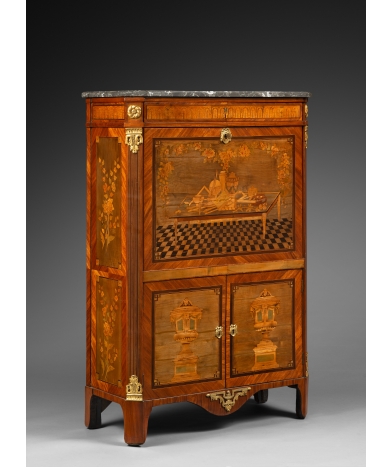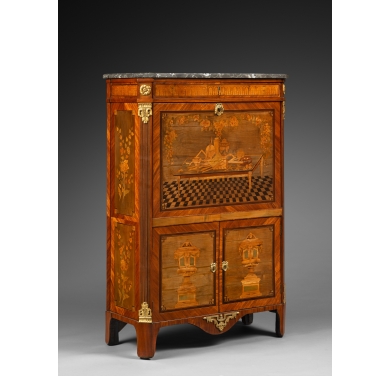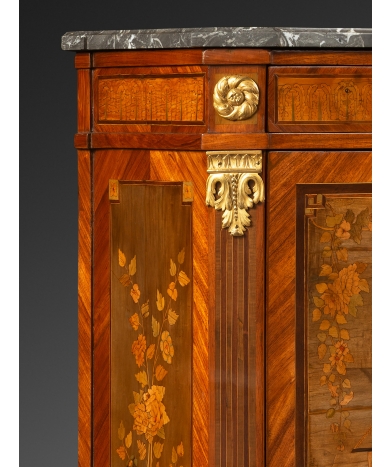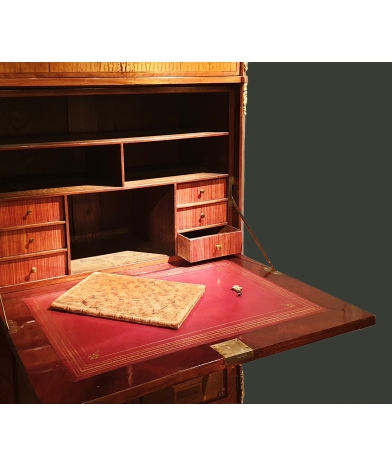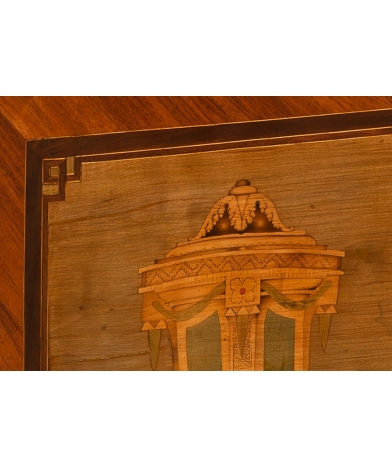Secretary with flap, Stamped Wolff
Parisian work Circa 1780
The architecture of this secretary, richly inlaid with flowers and precious objects, is based on canted front jambs. This type of secretary is infinitely rarer and more sought-after than the many commonplace secretaries with round jambs or sharp corners.
The front opens onto a flap decorated with intricate marquetry: on a chequered parquet floor, a table displays objects on the theme of the Liberal and Major Arts, crowned by a beautiful garland of flowers. At the bottom, the cabinet opens to two leaves, each adorned with covered vases. The cut sides simulate fluted pilasters. The top drawer is adorned with a frieze.
On the sides, a marquetry of branches and flowers, of equal quality, is divided into three panels that echo the layout of the front doors, flap and drawer. Inside, six drawers and four compartments surmount the abatant trimmed with beautiful red leather gilded with small irons.
The 10 marquetry panels are framed in Greek-style corners. The rich decoration is based on a wide variety of woods: sycamore, various stained fruit woods, boxwood fillets, rosewood, rosewood and amaranth.
The desk is adorned with a fine trim of neoclassical bronzes, finely chased and gilded. The top is covered with white-veined gray marble. This piece of furniture is in a very good state of preservation, having undergone only minor restorations and maintenance. It is now in perfect condition.
Stamp of Christophe Wolff (1720 - 1795), Master in 1755 : He was one of the finest German cabinetmakers to come to France in the second half of the 18th century. Wolf's work is characterized by excellent craftsmanship. Known for his skilful marquetry, he produced furniture of the highest standard, many of which are preserved in institutions: The Louvre has a capuchin desk by him, which forms a “bonheur du jour”. A pair of encoignures and a commode from the Transition period are also on display at the Musée des Arts Décoratifs in Paris. A small secretary inlaid with flowers, also by Wolff, is in the Musée Cognaq-Jay.


